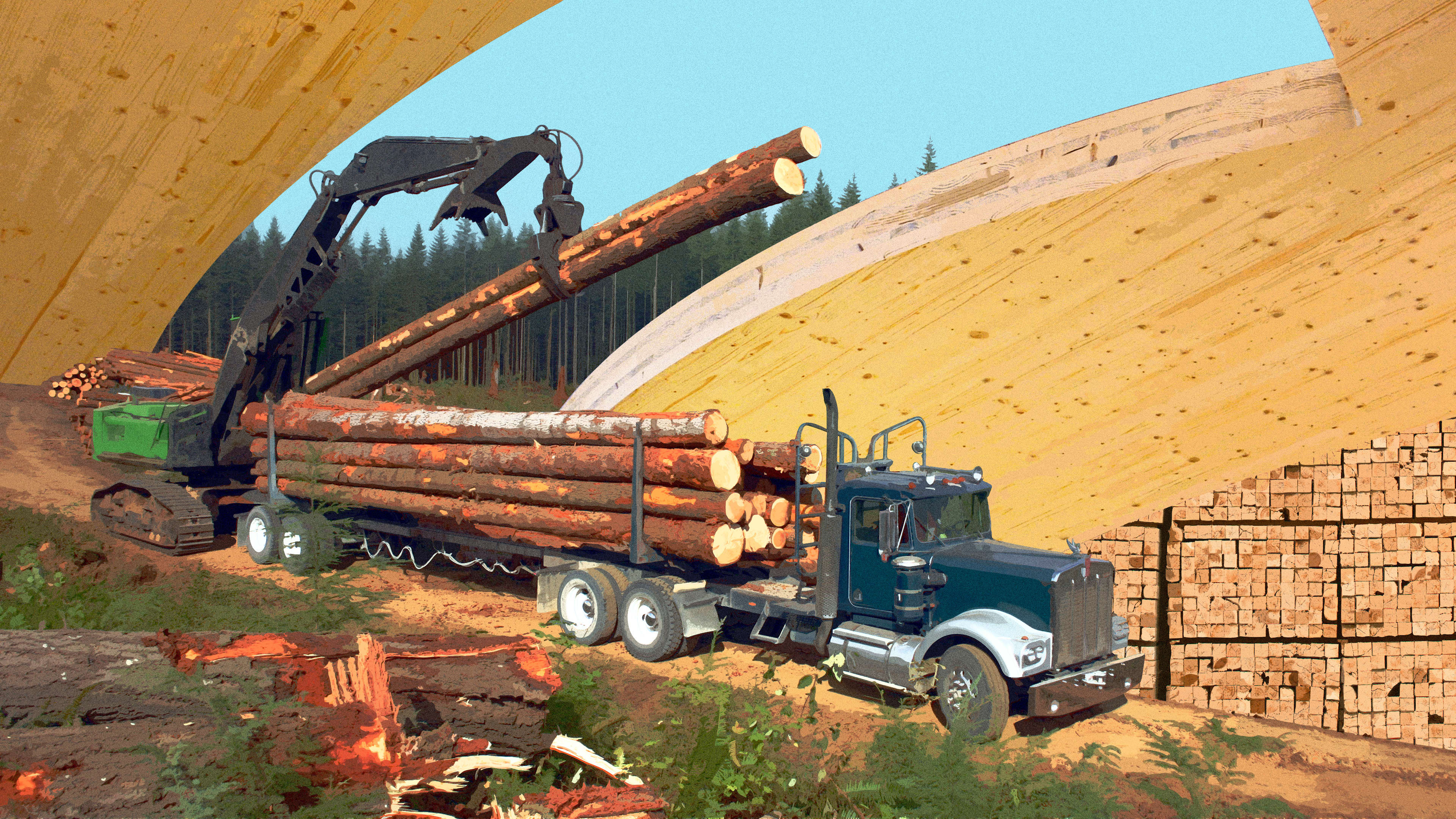This week, the U.S. Department of Agriculture and the U.S. Forest Service announced a $50 billion plan to fight wildfires. By deploying prescribed burns and thinning more than 20 million acres of federal forests over the next decade, they hope to literally cut down the amount of combustible material that has fueled the largest wildfires in recorded history.
The goal is, in fact, to reduce wildfires. But one of the side effects may be a huge infusion of ecologically harvested wood into the supply chain for building materials. For architects, this firefighting tool could also be a new source of carbon-sequestering wood for sustainable building projects.
The program comes at a time when architects and developers are increasingly looking to shift away from building materials like steel and concrete, which produce large quantities of carbon emissions, and toward materials that can store those emissions for decades. Wooden buildings, some rising dozens of stories, are seen as a viable pathway to reducing the impact of the construction industry.
The green building industry could be a major beneficiary of the program, says Cynthia “Cindi” West, director of the U.S. Forest Service’s Forest Products Lab. “Some of it will go into lumber, some of it will go into engineered products, and some of it will go into other types of materials, from wooden pallets to a fiber product like paper,” West says. “We can build very tall buildings out of wood and sequester that carbon for a very long time.”
But not all the wood being cut down is likely to become typical two-by-fours or sheets of plywood. West’s lab is working with university and industry partners to develop new kinds of tree-based materials. Lignin, the glue-like polymer within wood that gives it rigidity, can be extracted from trees and turned into everything from insulating foam to nanoscale adhesives that can replace the cement in concrete.
“We’re in the testing phase for the best combinations of nanomaterials in different cement products right now,” West says. She expects these kinds of materials to be increasingly common within the decade.
Architects are clamoring for sustainable, wood-based building materials. “Any increase in supply from good ecological sources is fantastic and much needed,” says Jacob Dunn, of ZGF Architects, which is working on several large-scale wood and mass timber architecture projects. Knowing where wood is coming from and how it’s harvested is a challenge, according to Dunn, with some foresters using clear-cut techniques that are damaging to the environment. Being able to know that much of the wood being harvested by the U.S. Forest Service will be cut in a way that balances wildfire prevention and forest health means that architects can be more certain about the environmental impacts of the materials they use in their projects.
But the influx of wood may not necessarily result in an immediate surge in the supply of mass timber building materials, according to Paul Vanderford, director of green markets at Sustainable Northwest, which promotes sustainable forestry practices. Instead, he says that the forest-thinning approach being pursued by the Forest Service can result in a good supply of wood for building projects that aim to reduce their overall carbon footprint. Forest restoration treatments like what the Forest Service is planning can also be thought of as green building efforts. “The two can be, should be, and are being linked together,” he says.
Dunn of ZGF Architects says that architects hoping to use wood from this effort may need to rethink how they design with this wood source, which may be less optimal but which has the benefit of being sustainably sourced. “Oftentimes we’re trying to fit the forest and what it produces into our buildings versus the other way around,” Dunn says. “This represents an opportunity for us to really embrace what’s coming out of this ecologically sound practice and modify our behavior to accept that.”
Recognize your company's culture of innovation by applying to this year's Best Workplaces for Innovators Awards before the extended deadline, April 12.
